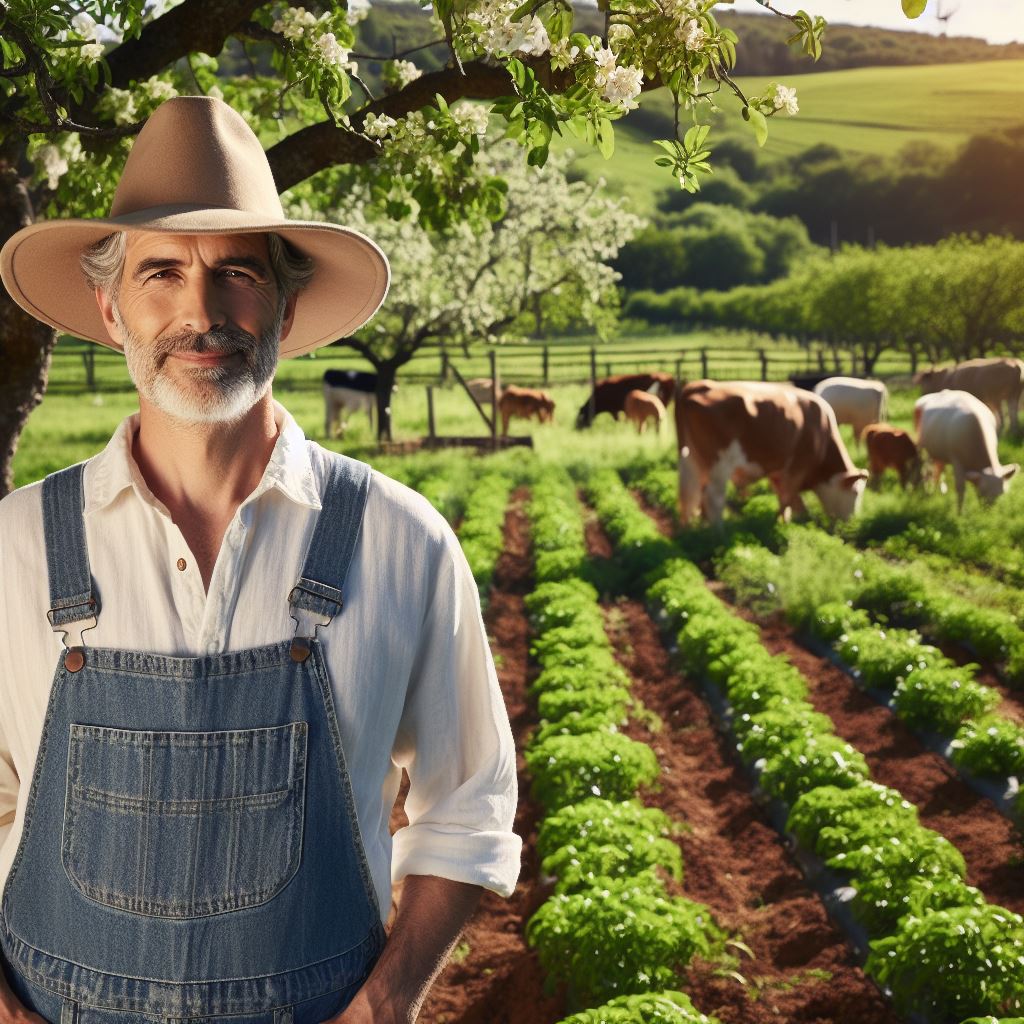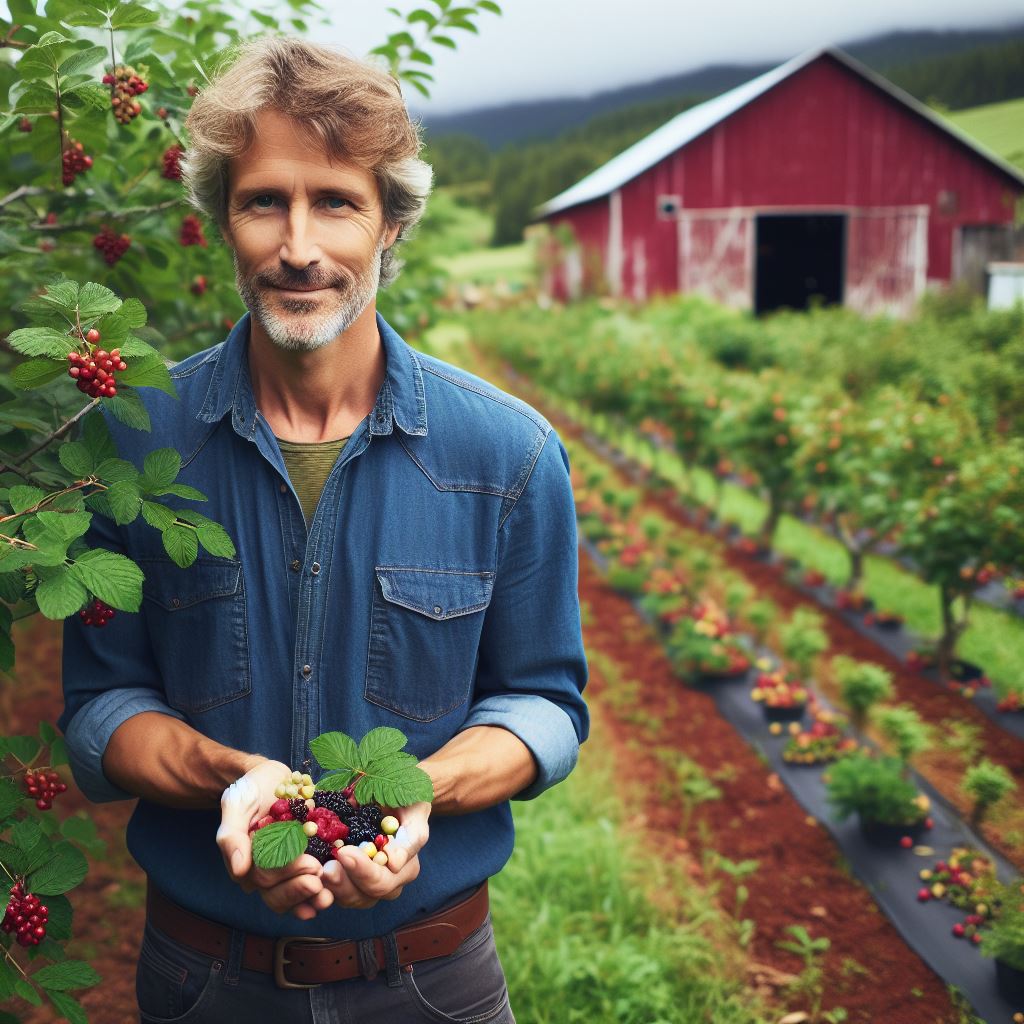Introduction
Agroforestry is a farming practice that combines trees with crops or livestock.
Biodiversity is crucial in farming for various ecological and economic reasons.
In the dynamic realm of modern agriculture, the pursuit of sustainable and diverse farming practices has become imperative.
Among the innovative approaches gaining prominence, agroforestry emerges as a beacon for fostering biodiversity within agricultural landscapes.
Integrating trees and shrubs with traditional crops, agroforestry not only redefines the conventional boundaries of farming but also establishes a harmonious coexistence between nature and agriculture.
This intricate synergy holds the promise of enhancing ecological resilience, optimizing resource utilization, and promoting the long-term well-being of both the environment and farming communities.
In this exploration, we delve into the multifaceted world of agroforestry, uncovering its profound role in cultivating a more diverse and resilient agricultural future.
Benefits of Agroforestry for Biodiversity
Increased habitat and food sources for wildlife
- Agroforestry provides a diverse environment that attracts and supports a wide range of wildlife species.
- The presence of trees and other vegetation creates suitable habitats for birds, insects, and small mammals.
- Wildlife can find shelter, food, and reproductive spaces, promoting biodiversity within the agroforestry system.
Enhanced soil fertility and biodiversity
- Agroforestry practices contribute to the enrichment of soil due to the presence of a greater variety of plant species.
- The roots of trees and other plants add organic matter, improving soil structure and nutrient availability.
- The diversity of plants in agroforestry systems supports a range of soil microorganisms, promoting beneficial interactions.
Improved water quality and conservation
- Agroforestry helps prevent soil erosion by reducing runoff and retaining water in the soil.
- Trees and vegetation act as natural filters, removing pollutants and absorbing excess nutrients from runoff water.
- The shade provided by trees can also reduce evaporation, conserving water resources in agricultural fields.
Mitigation of climate change
- Agroforestry systems sequester carbon, helping to mitigate greenhouse gas emissions.
- Trees absorb carbon dioxide from the atmosphere, storing it in their biomass and in the soil.
- The presence of trees in agroforestry also helps regulate temperatures, reducing the impact of heatwaves and extreme weather events.
In short, agroforestry offers numerous benefits for biodiversity:
It creates habitats and food sources for wildlife, supporting a diverse range of species.
Agroforestry enhances soil fertility by enriching it with organic matter and supporting beneficial soil microorganisms.
It improves water quality and conservation by reducing erosion and acting as a natural filter.
It contributes to climate change mitigation by sequestering carbon and regulating temperatures.
By implementing agroforestry practices, farmers can not only increase their productivity but also contribute to the conservation of biodiversity and the sustainable management of natural resources.
Read: Climate Smart: Agroforestry Role in Farming
Types of Agroforestry Practices
Some examples of crops grown in forest farming are ginseng, mushrooms, or medicinal herbs, while trees like oak or maple are often present as well.
Transform Your Agribusiness
Unlock your farm's potential with expert advice tailored to your needs. Get actionable steps that drive real results.
Get StartedAgroforestry practices offer innovative and sustainable farming methods that integrate trees, crops, and livestock in one system.
By blending agricultural and forestry techniques, diverse farming systems are created, contributing to the conservation of biodiversity.
Alley Cropping
Alley cropping is a prominent agroforestry practice where crops are cultivated within alleys formed by rows of trees or shrubs.
This technique provides various benefits for biodiversity. The alleys offer shelter, nesting sites, and foraging areas for beneficial insects, birds, and other wildlife.
Additionally, the trees conserve soil, control erosion, and provide organic matter for nutrient cycling.
In alley cropping systems, farmers can choose crops and trees that complement each other.
For instance, maize, beans, and vegetables are often grown as crops, while legumes or fruit trees are commonly planted as alley trees.
The combination of crops and trees maximizes land use efficiency while ensuring biodiversity conservation.
Silvopasture
Silvopasture is another agroforestry practice that combines livestock raising with tree and forage management.
This practice provides numerous benefits for biodiversity.
The presence of trees in pastures offers shade and protection for the livestock, promoting animal welfare.
The diverse vegetation structure benefits wildlife, providing habitat for insects, birds, and other species.
Furthermore, silvopasture systems contribute to carbon sequestration and climate change mitigation.
It can involve different combinations of livestock and trees. Cattle, sheep, or goats are commonly raised in conjunction with trees such as oak, pine, or fruit trees.
This combination allows for efficient grazing while fostering biodiversity by incorporating trees into traditional pasture management.
Forest Farming
Forest farming is an agroforestry practice that focuses on cultivating high-value non-timber forest products under a forest canopy.
This practice supports biodiversity by maintaining forest ecosystems and providing habitat for diverse wildlife.
Forest farming also offers economic opportunities by producing valuable products, including medicinal herbs, mushrooms, or ginseng.
Within forest farming systems, certain crops and trees are commonly grown.
For example, ginseng, renowned for its medicinal properties, is often cultivated under the shade of trees like oak or maple.
This symbiotic relationship between crops and trees allows for the sustainable production of valuable non-timber forest products while conserving biodiversity.
In fact, agroforestry practices such as alley cropping, silvopasture, and forest farming are effective strategies for promoting biodiversity in farming systems.
These practices integrate trees, crops, and livestock, creating diverse and sustainable agricultural systems.
By incorporating agroforestry into farming practices, we can conserve biodiversity while ensuring long-term food security and environmental sustainability.
Showcase Your Farming Business
Publish your professional farming services profile on our blog for a one-time fee of $200 and reach a dedicated audience of farmers and agribusiness owners.
Publish Your ProfileRead: Trees & Crops: Perfect Pair for Sustainable Farms
Case Studies
Case study 1: Agroforestry implementation in New Forest Farm, Wisconsin
Overview of the farm and location
New Forest Farm, located in Wisconsin, is a diverse agricultural operation that practices agroforestry.
Agroforestry practices implemented:
At New Forest Farm, they have implemented various agroforestry practices, including alley cropping and silvopasture.
Positive impacts on biodiversity
The implementation of agroforestry practices at New Forest Farm has resulted in increased biodiversity.
The diverse tree and plant species provide habitats for various wildlife, supporting their populations.
Case study 2: Agroforestry techniques in Chequessett Farm
Overview of the community and environmental context
Chequessett Farm is situated in a community that values sustainable agriculture and environmental conservation.
Agroforestry practices introduced
At Chequessett Farm, agroforestry techniques such as windbreaks, riparian buffers, and hedgerows have been introduced to maximize biodiversity.
Success stories and benefits for biodiversity
The agroforestry techniques implemented at Chequessett Farm have led to success stories, such as improved soil health, reduced erosion, and increased presence of beneficial insects, birds, and pollinators.
Read: Future Farms: How Agroforestry Shapes Tomorrow

Challenges and Considerations in Agroforestry
Initial investment and long-term management
- Agroforestry requires a significant initial investment in establishing tree crops and diverse farming systems.
- Long-term management of agroforestry systems includes regular monitoring, pruning, and maintenance of trees.
- Farmers need to allocate resources and time to ensure the success and productivity of agroforestry practices.
- Access to capital and financial resources is crucial for farmers to invest in agroforestry practices.
Potential competition and conflicts
- Agroforestry may compete with traditional farming practices for resources, such as land and water.
- Conflict may arise between neighboring farmers who have different agricultural practices and priorities.
- Balancing the needs of agroforestry with other agricultural activities can be challenging.
- Clear communication and collaboration among farmers can help mitigate potential conflicts.
Knowledge and skill requirements
- Successful implementation of agroforestry requires knowledge of tree species selection and management techniques.
- Farmers need to acquire skills in integrating trees with agricultural crops and livestock.
- Continuous learning and training are essential for farmers to adapt to changes in agroforestry practices.
- Collaborating with agricultural and forestry experts can help farmers gain the necessary knowledge and skills.
Government policies and support
- Government policies and regulations can either enable or hinder the adoption of agroforestry practices.
- Supportive policies, such as financial incentives and technical assistance, can promote agroforestry adoption.
- Lack of policy coherence and inconsistent support may discourage farmers from engaging in agroforestry.
- Governments should prioritize developing supportive policies and programs to encourage agroforestry practices.
In a nutshell, while agroforestry offers numerous benefits for biodiversity and sustainable farming, there are several challenges and considerations that farmers need to address.
These include the initial financial investment, long-term management requirements, potential competition and conflicts, knowledge and skill requirements, as well as government policies and support.
Overcoming these challenges through collaboration, access to resources, and supportive policies can enhance the widespread adoption of agroforestry practices and promote biodiversity conservation in agriculture.
Read: Agroforestry: A Path to Eco-Friendly Farming
Conclusion
Agroforestry practices, such as incorporating trees into farming systems, have been shown to enhance biodiversity on farms.
Trees provide habitat for various plant and animal species, increase soil fertility, conserve water, and mitigate climate change.
Farmers are encouraged to adopt agroforestry practices as a sustainable and profitable farming solution.
By diversifying their crops and integrating trees into their farms, they can improve ecosystem health, increase resilience to climate change, and enhance their income through multiple revenue streams.
Further research and support are needed to promote the widespread adoption of agroforestry.
This includes investment in innovative approaches, providing technical assistance to farmers, and creating policies that incentivize agroforestry.
By doing so, we can ensure a more sustainable future for agriculture and preserve biodiversity for generations to come.




